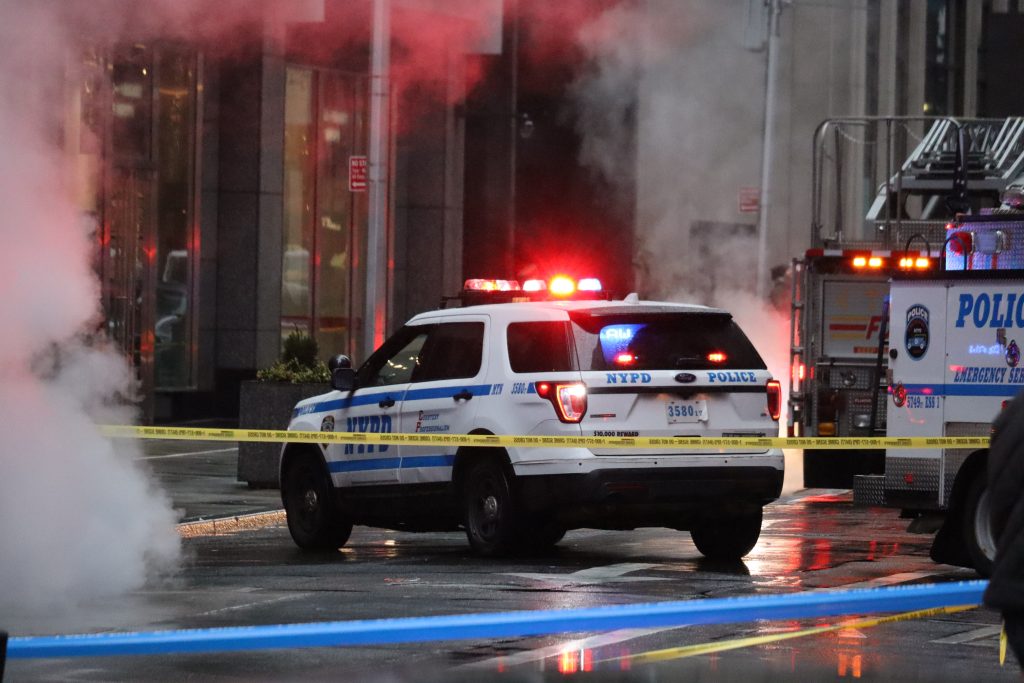A new study has demonstrated what harm reductionists have long been saying: more people die of overdoses after police seize drugs.
The report, published in American Journal of Public Health and funded by the Centers for Disease Control and Prevention, provides the first empirical evidence that cops seizing illicit opioids is associated with increased overdose in the surrounding community.
The study looked at two years of opioids and stimulants seizure data from Indianapolis police and looked at how those seizures impacted fatal and non-fatal overdoses in the areas where the seizures took place within certain time frames. The results showed that fatal overdoses doubled in the week after an opioid seizure within about 500 metres of where the seizure occurred. They also found that the distribution of naloxone, the opioid-overdose reversal drug, by paramedics doubled in the two weeks following an opioid-related drug seizure within 500 metres of the bust.
While the study was not designed to establish a causal relationship between police drug busts and a spike in overdoses, it did lay out some of the reasons this happens.
Opioid users who are cut off from their supply will go into withdrawal and their tolerance will go down, putting them at higher risk of overdose when they find a new—sometimes unknown supplier—selling drugs with an unknown potency.
“If you take somebody’s drugs from them and they have to go find a new supply, they are not able to dose themselves at all on that new supply and their overdose risk increases dramatically,” said Bradley Ray, lead study author and senior researcher at the nonprofit research institute RTI International.
“There’s a lot of good work going on right now that is focused on interventions that could prevent overdose deaths. But we also need to think about: what are those practices and those policies that are in place right now that are exacerbating those overdose deaths.”
The U.S. is dealing with record-breaking overdoses, the majority of them driven by fentanyl, with more than 109,000 people dead in 2022. Dr. Rahul Gupta, director of the White House Office of National Drug Control Policy, recently said that number could rise to 165,000 by 2025 without adequate policy interventions.
While federally, there has been a shift towards embracing more harm reduction strategies, including making naloxone and drug testing strips more easily accessible and syringe exchange programs, cracking down on the fentanyl supply change remains a priority; President Joe Biden’s 2023 fiscal budget included $18 billion for domestic and international law enforcement to try to stop the flow of drugs into the U.S. Safe drug consumptions sites remain federally illegal and there are no safe supply projects providing people with alternatives to street drugs—such programs already exist in Canada and Europe.
In San Francisco, which has one of the highest overdose rates in the country, Mayor London Breed vowed to crack down on open-drug use “bullshit.” Police there recently started arresting people for using and selling drugs in public, a move experts previously told VICE News is likely to drive up overdoses.
“Overdose is now impacting our national life expectancy, so it’s a big deal,” said Ray. “I don’t think we’re seeing enforcement strategies having any real impact on reducing the number of overdose deaths.”
Overdoses in Oregon have continued to rise, despite the state decriminalizing possession of small amounts of drugs.
“What’s missing from the narrative is that they still take people’s drugs,” Ray said. “So in Oregon, even where we’ve decriminalized drugs, this effect that we’ve observed in Indianapolis may exist.”
Ray said this phenomenon holds true for pharmaceutical drugs too. For example if the Drug Enforcement Administration plans to raid a rural doctor who provides buprenorphine—an opioid used to help people who are addicted to opioids—it could result in patients going back to illicit drugs. But the CDC’s Opioid Rapid Response Program can alert patients beforehand and even direct them towards finding different providers.
“That is literally the exact same thing that’s happening in this study, except for instead of it being patients, it’s people who use drugs in the community and instead of it being doctors, it’s drug merchants,” Ray said, adding that police could adopt a similar approach by alerting drug user communities before making a bust.
Ray said he plans to replicate the study in other cities.



